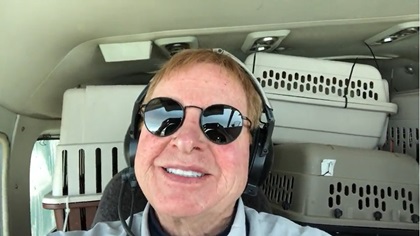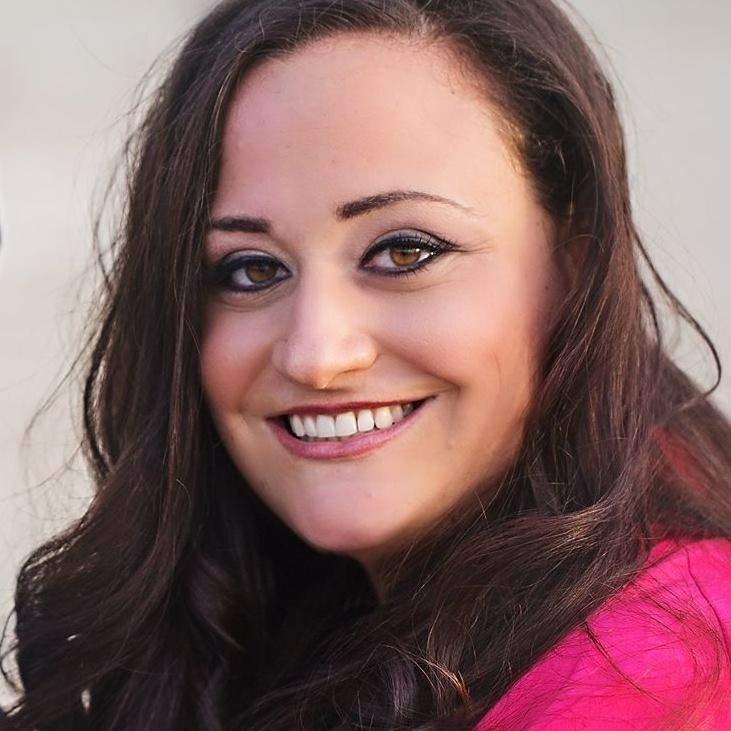Dogs are his co-pilots
More time working from home gives pet owners more time with their four-legged companions. According to The Washington Post, beginning mid-March, “Shelters, nonprofit rescues, private breeders, pet stores—all reported more consumer demand than there were dogs and puppies to fill it.” And the team from Dog is My Copilot is working to ensure there is enough furry, four-legged-love to go around.
Following the death of his wife in 2012, Dr. Peter E. Rork, an orthopedic surgeon and lifelong pilot, needed something that would help bring back some of that joy he had lost. After volunteering to fly animals for many years with Pilots N Paws, Rork teamed up with Judy Zimet, a Scottsdale, Arizona, real estate attorney and animal lover, to start an organization that combined their shared passion for animals and charity with Rork’s passion for flying, and Dog is My Copilot was born.
Dog is My Copilot operates a Cessna 208B Grand Caravan—aka Big Dog—that has been retrofitted from a 12-passenger airplane to one that can carry up to 251 animals in crates. Rork has about 8,000 hours and several ratings, including airline transport pilot, airplane single- and multiengine land, single-engine sea, and airplane instructor. In 2019, Rork received the FAA’s Wright Brothers Master Pilot Award, but says that this work for him is not about flying: “This is about being a part of the solution.”
AOPA caught up with Rork to find out more about Dog is My Copilot, how he incorporates his love of flying to save so many animals, and how the animals have saved him too.
How did you originally get involved in aviation?
I have been interested in flying from my earliest memories. I recall getting my first library card and checking out a book on how to fly an airplane with stick figures for illustrations and had been written in the 1930s. I must have renewed that book dozens of times.
How did you come up with the idea to create Dog is My Copilot?
I had been asked to transport a couple of Golden Retrievers from Idaho Falls, Idaho, to Hayden, [Colorado]. I was practicing orthopedic surgery in Jackson Hole, [Wyoming] and thought that it would be a way to get my aircraft wheels up. My wife Meg and I would do the occasional rescue flight. A couple with Pilots N Paws, a couple of times a year. A real feel good mission, but terribly inefficient in the overall picture of addressing the needs of the dogs and cats. When my wife suddenly died, I was a broken man. I quit medicine and grieved in isolation with my rescue dog for months. It was a friend who called and told me that Meg would want me to be happy and to get on with my life. About the only thing that was bringing solace was my rescue dog, Doyle. I felt that providing that for others was the way to go.
I started the nonprofit in August of 2012 and started flying dogs with the Pilots N Paws model and soon found that one could go broke quickly without making an impact. It wasn't until I met Sharon Lohman in Merced, [California,] that I knew what I had to do. Sharon runs an animal rescue program called New Beginnings. She was pulling dogs from a local shelter, with a euthanasia rate over 90 percent, and driving them to Portland, Seattle, Spokane, Boise, Missoula, Salt Lake City, and Denver, 20 or so at a time in a van. And then driving back to Merced and doing it all over again. I told her that with my [airplane] those were 4-5 hour flights for me, not the 16-18 hour one way trips for her. I knew what I had to do.
Do you have a favorite memory from your work rescuing dogs and other animals?
Twice a year, a dog will escape from their crate in flight and work their way up front. My first clue is the hot panting breath on my neck. They do not pose a danger, simply looking for company.
Any crazy or exciting stories of flying with more animals than humans?
Well, if one of my canine passengers gets motion sickness, I will not know until they are offloaded.
What are your tips to others who enjoy flying, or would like to fly with their pets?
Our pets are not eggs. No special precautions are necessary. I cannot imagine a dog accepting a headset or ear plugs.
What would you say to someone interested in using aviation to also help rescue animals?
Easy, reach out to your local shelter and ask. They are either sending dogs out or taking them in. Find out from where and help out.
Do you ever use your experience in aviation to help encourage others to get involved in aviation too, and if so how?
All the time. We are always looking for pilots who are qualified to fly the Caravan. I get dozens of requests from pilots with weeks of experience and dozens of hours. If they truly want to volunteer, I will have them fly along with me for the turbine experience.

How does your organization work?
We work with dozens of groups with high euthanasia rates flying the dogs and cats to the groups that will never put down a healthy animal. The trips are planned months in advance, and are coordinated by my Executive Director, Kara Pollard.
How best to contact you if they need your help?
How do you decide what missions to fly?
If a group can fill the aircraft and are within our aircraft range (typically no farther than 1,000 [nautical miles]) we will consider flying for them. We fly animals marked as "Kill" to a no kill shelter. And they must be a 501(c)(3). There is no shortage of need.
Do you ever have to turn down missions?
Distance is the primary factor or insufficient numbers to have the flight make financial sense. We do not charge for our services, so we have to be careful with the resources.
Has all the media attention helped Dog is My Copilot?
Very much so. For years we flew "under the radar." We were not looking for personal recognition, but are pleased that people are noticing the need for spay and neuter and adopt don't shop.
How is your organization funded?
We fly on tax deductible donations. Whatever shortfall exists comes out of my own pocket.
Have you ever decided to keep any of the animals you’ve helped rescue?
Yup. I have three rescues that started in a crate in the back of the aircraft and now sleep on my bed.
What can others who are looking to help support your organization do?
There are four things that people can do to stop being part of the problem and become part of the solution.
- Adopt, don't shop. Better yet, adopt two!
- Foster an animal and open a spot at the local animal control.
- Volunteer at your local shelter.
- Donate money.
Remember, for every animal that is in a shelter there is a human responsible. And every animal that you save, saves two. The one that you save, and the one that takes its place.



